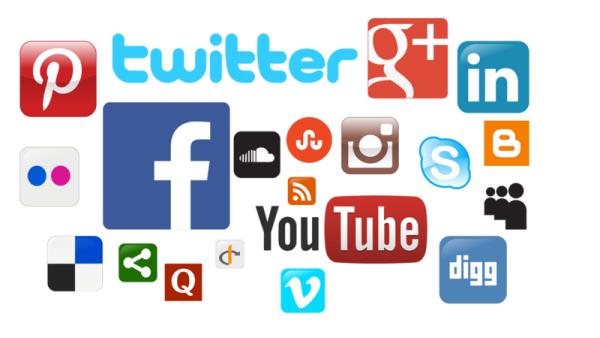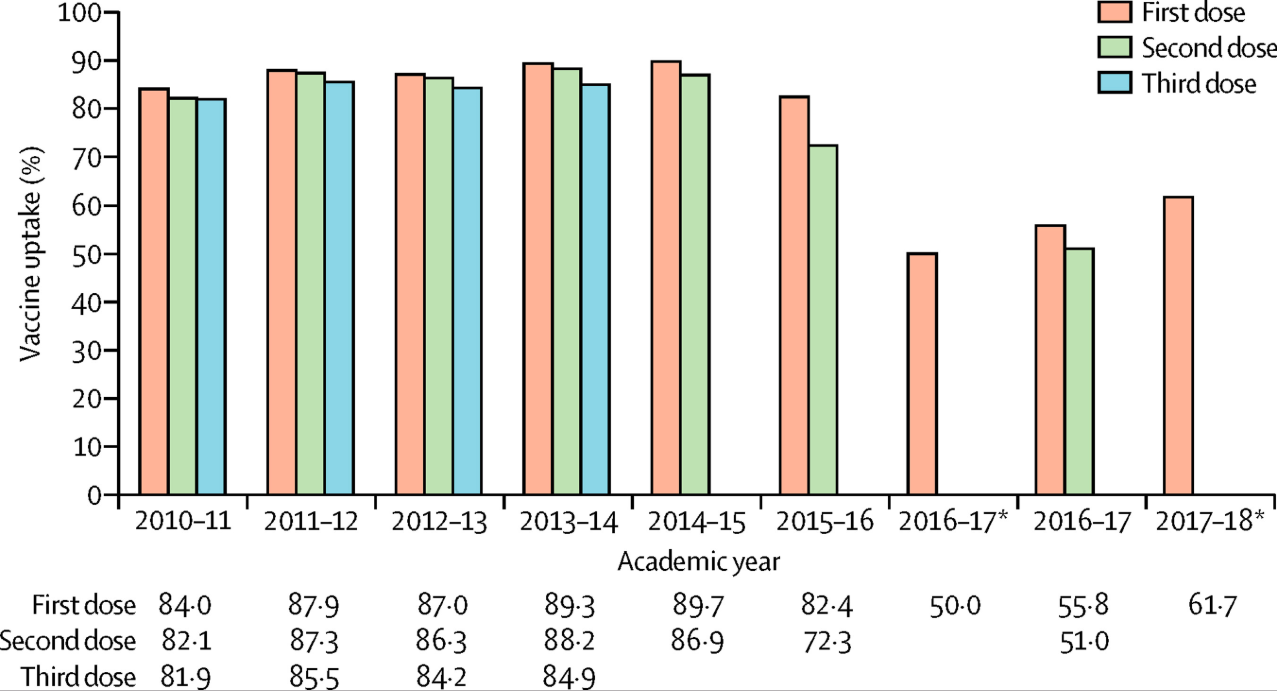
How can we get more parents to vaccinate their children? That is one of the questions that keep me and others in the pro-science community awake at night.
A new correspondence in The Lancet may bring us one step closer to an answer through its analysis of the human papillomavirus (HPV) vaccination program in Ireland that began in 2010.
The HPV vaccination program targeted girls aged 12–13 years. At the beginning of the program, the percentage of girls who were vaccinated was above 80%, reaching its highest level of vaccination in 2014–15 of 86.9% (see figure below.)
However, the high rate of vaccination dropped to 72·3% in 2015-16 (see figure below) with an even further drop to 50% of the first dose in 2016–17.

What caused this decline? Unfortunately, it is a reason that we know all too well... the doubts surrounding the safety of vaccines slipping into concerned parents minds. As noted in The Lancet, this fear was placed into the minds of parents through an anti-vaccine lobbying campaign put into place in 2015. This program was complete with all of the tactics that we know so well including personal stories of vaccine injury which shown in a documentary called Cervical cancer vaccine—is it safe? which was played on national television.
In order to combat this force, the Irish National Immunization Office began to actively promote the vaccine. Before implementing strategies, they ran focus groups to try to understand the concerns parents had regarding the HPV vaccine. This resulted in the HPV Vaccination Alliance formed in 2017. The alliance consists of over 35 different organizations that are committed to raising awareness of HPV vaccination. They were a cross-disciplinary group coming from areas of health, women's rights, child welfare, and wider civil society.
In 2017–18, a media campaign which was strongly supported by the HPV Vaccination Alliance and senior politicians was launched. Social media presence was prioritized with print and online materials such as videos. Health professionals were also targeted with a comprehensive training program.
The result? When unvaccinated girls were offered another opportunity to be vaccinated, the first dose uptake increased in 2016–17 to 55.8% and an estimated 61.7% in 2017–18.
This type of work may be the key to keeping kids healthy. There have been too many deaths of children because they or those around them have not been vaccinated. So, to everyone who is wondering how to get this important health message through to parents, perhaps we should look to the Irish.
Source: Corcoran B. et al, Rapid response to HPV vaccination crisis in Ireland Published: Volume 391, No. 10135, p2103, 26 May 2018 DOI: https://doi.org/10.1016/S0140-6736(18)30854-7



